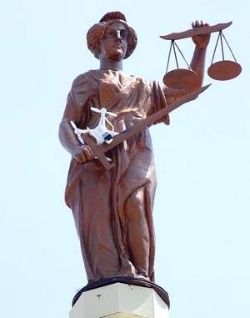
SAN ANTONIO – Drone use is taking off around the United States, and the Texas Legislature is among the state governments trying to keep up.
Texas lawmakers passed three laws on unmanned aircraft – more commonly referred to as drones – in the past legislative session, and they will go into effect September 1. The laws restrict use in certain areas and increase the occasions when a drone pilot can take pictures.
FAA guidelines require authorization to use drones for commercial use, and Texas state law already allows the aircraft to take pictures under certain conditions. Lawmakers expanded those conditions to include more broad academic purposes and add engineers and surveyors to the list.
“There are a lot of early movers experimenting with it, learning the technology, so they’re ready when the rules do come in place,” said Mark Paulson, a drone salesman for G4 Spatial Technologies.
Paulson is also a licensed surveyor. Demonstrating the capabilities of an eBee fixed-wing drone, he said the aircraft and their software are more accurate than traditional surveying methods. Instead of a 50-foot square, you get a 3D model every 1.3 to 1.5 inches.
They’re also a lot faster. For example, take a 100-acre aerial photo and topographical survey.
“Typically, that would take a day-and-a-half to three days in the field and a day or two in the office for processing,” Paulson said. “The drone, you can do the complete process in about eight hours.”
With the capabilities of drones expanding, Paulson believes it won’t be long before every engineer and surveyor is using one.
While everyone may be using these drones soon, they won’t be using them everywhere.
Lawmakers also barred drone pilots from flying them too close to “critical infrastructure facilities” like power plants or gas processing plants. Flying less than 400 feet above the ground over these facilities, close enough to interfere with their operations or making contact with it or anybody on the property will earn the drone pilot a Class B or Class A misdemeanor, depending on what number offense it is.
It appears legislators also want some distance from drones. The third law they passed allows the DPS director to either prohibit or limit the use of drones above the Capitol Complex. Those rules need to be in place by Dec. 1.
Any drone operators, commercial or recreational, should keep safety mind. Though piloting an unmanned aircraft near airplanes or helicopters is illegal, the FAA said pilots have already reported 650 drone sightings as of Aug. 9. That’s compared to 238 sightings in all of 2014.
Additionally, David Leal, a technician at Hobby Wireless in San Antonio, pointed out that anything that falls off the drone is coming down, possibly onto the pilot or someone else.
“Some of these things, like the larger platforms can carry up to about a 15 lb load or more,” Leal said. “That’s a lot to rain down on your head.”
============
For more on FAA regulations on drones, click here.
Read the new state laws on drones here:
HB 1481 http://www.legis.state.tx.us/tlodocs/84R/billtext/html/HB01481F.htm
HB 2167 http://www.legis.state.tx.us/tlodocs/84R/billtext/html/HB02167F.htm
HB 3628 http://www.legis.state.tx.us/tlodocs/84R/billtext/html/HB03628F.htm